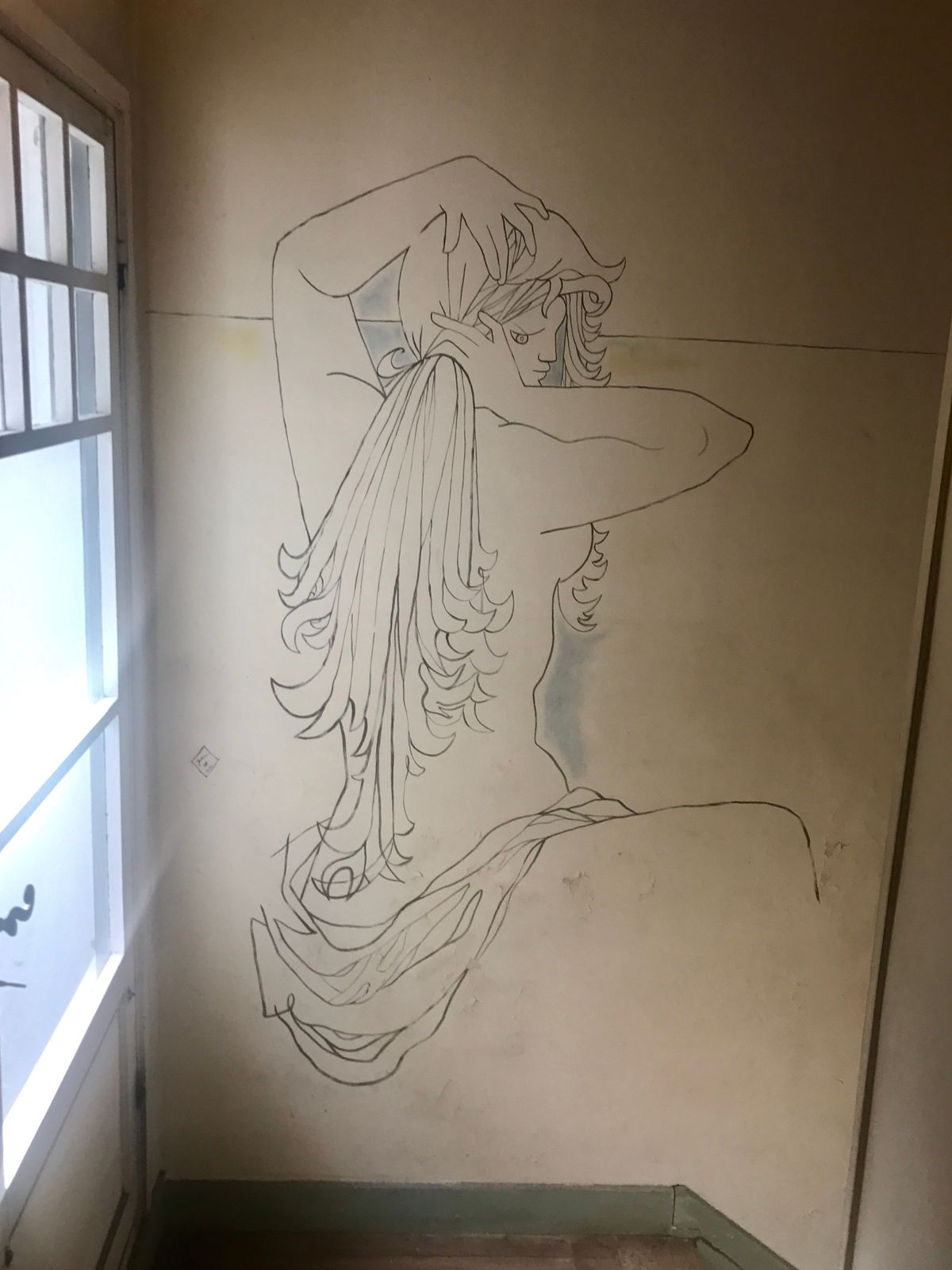About
Writer and filmmaker Jean Cocteau had just finished overseeing the work on a film adaptation of his novel "Les Enfants Terribles" in 1949, when an invite from socialite and art patron Francine Weistweiller brought him to the French Riviera. What was intended to be a week-long visit to Weistweiller's villa turned into a 12-year artistic project in which Cocteau covered nearly every wall and ceiling inside the home with paintings and mosaics.
Cocteau began painting the walls of the Saint-Jean-Cap-Ferrat villa in 1950. A few days after arriving at Weistweiller's home, he started to feel restless. "I’m tired of idleness, I wither here,” he said to Weistweiller, and asked if he could draw Apollo's head, the Greek god of music, poetry, and art, above the living room fireplace.
That one painting, described by Cocteau as a "tattoo," lead to others, one after another, with contributions by other artists including Pablo Picasso. “Picasso opened and closed all doors," Cocteau explained. "So it remained to paint on the doors: this is what I tried to do. But the doors open in the rooms; the rooms have walls, and if the doors are painted, the walls look empty.”
In Weisweiller's bedroom, Cocteau painted a shepherd; over another mantle, a nymph set to punish Actaeon, the Ancient Greek hunter who is killed by Artimis, the goddess of the hunt; and flanking the portrait of Apollo were two paintings Cocteau called "his priests of the sun." Most of the paintings were inspired by Greek mythology, but there are some that paid tribute to the home's seaside location with fishing, nautical, and sea life images.
Cocteau also created mosaics for both the entryway and the patio, one featuring two faces and a snake, and the other the head of Orpheus. The art-covered walls even inspired a film, the 1952 La Villa Santo-Sospir, a filmed tour of the home given by Cocteau. The home also became a meeting ground for many well-known people of the time including, actor Marlene Dietrich, composer Francis Poulenc, and actor Greta Garbo.
Of his time at the villa Cocteau said, “When I was working at Santo Sospir, I became myself a wall and these walls spoke for me.” It was an important time in his life, and the result was this hidden artistic treasure.
Related Tags
Know Before You Go
Tours are by reservation only; see website link above.
Published
September 27, 2017






























